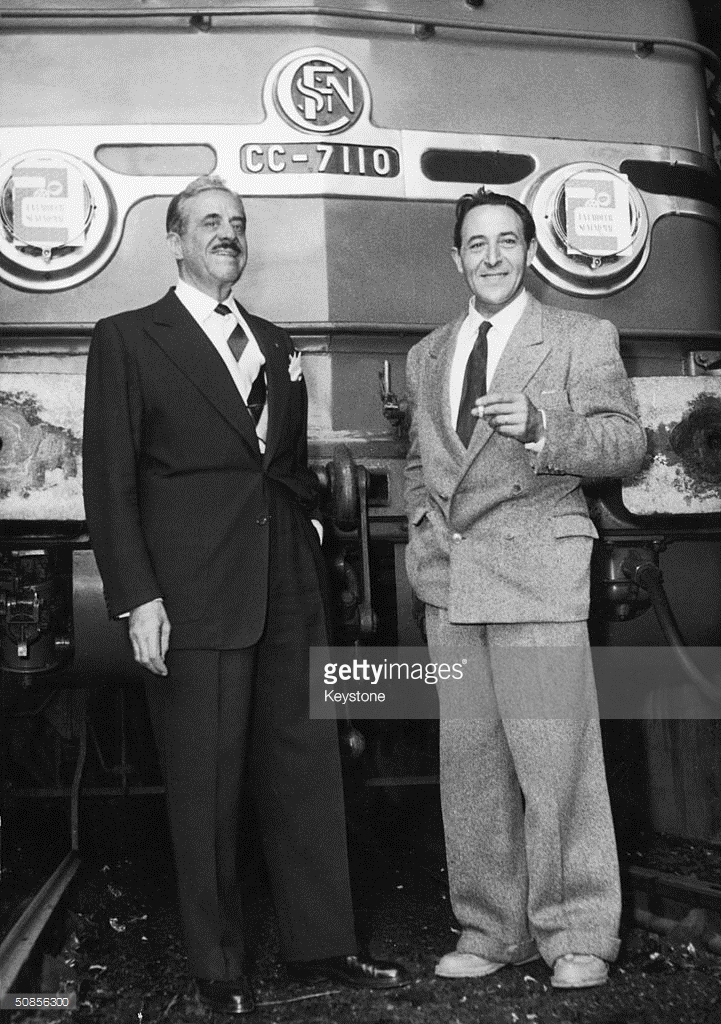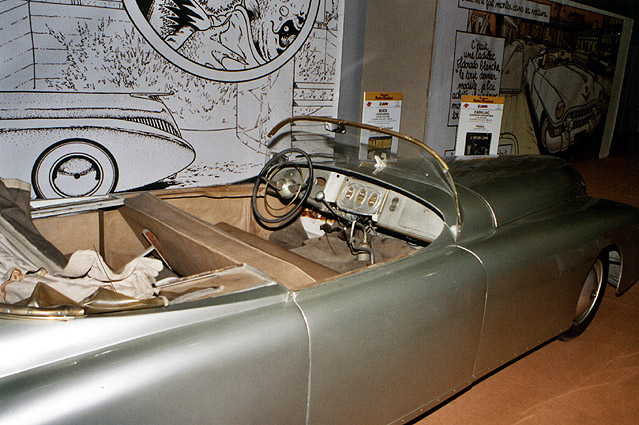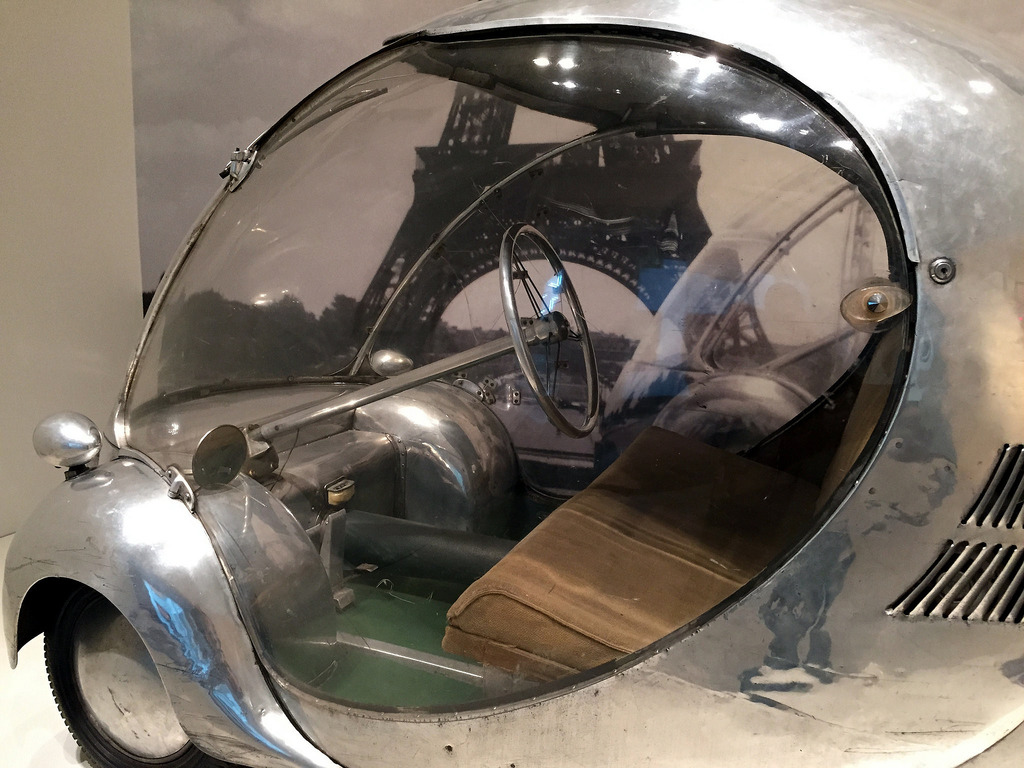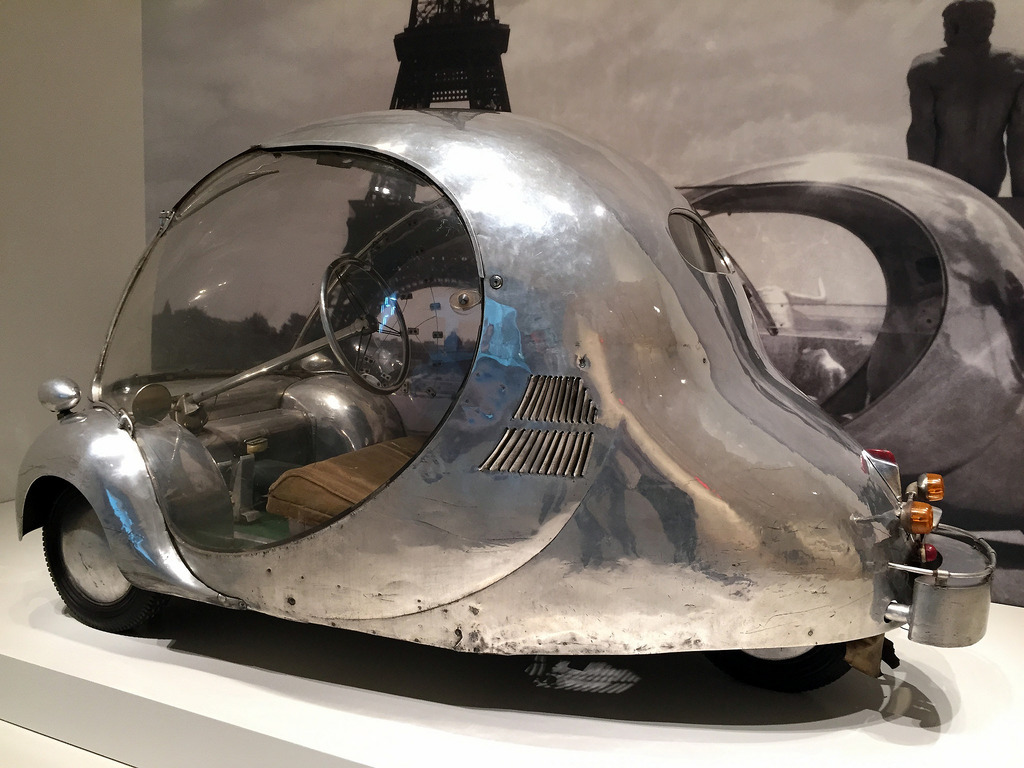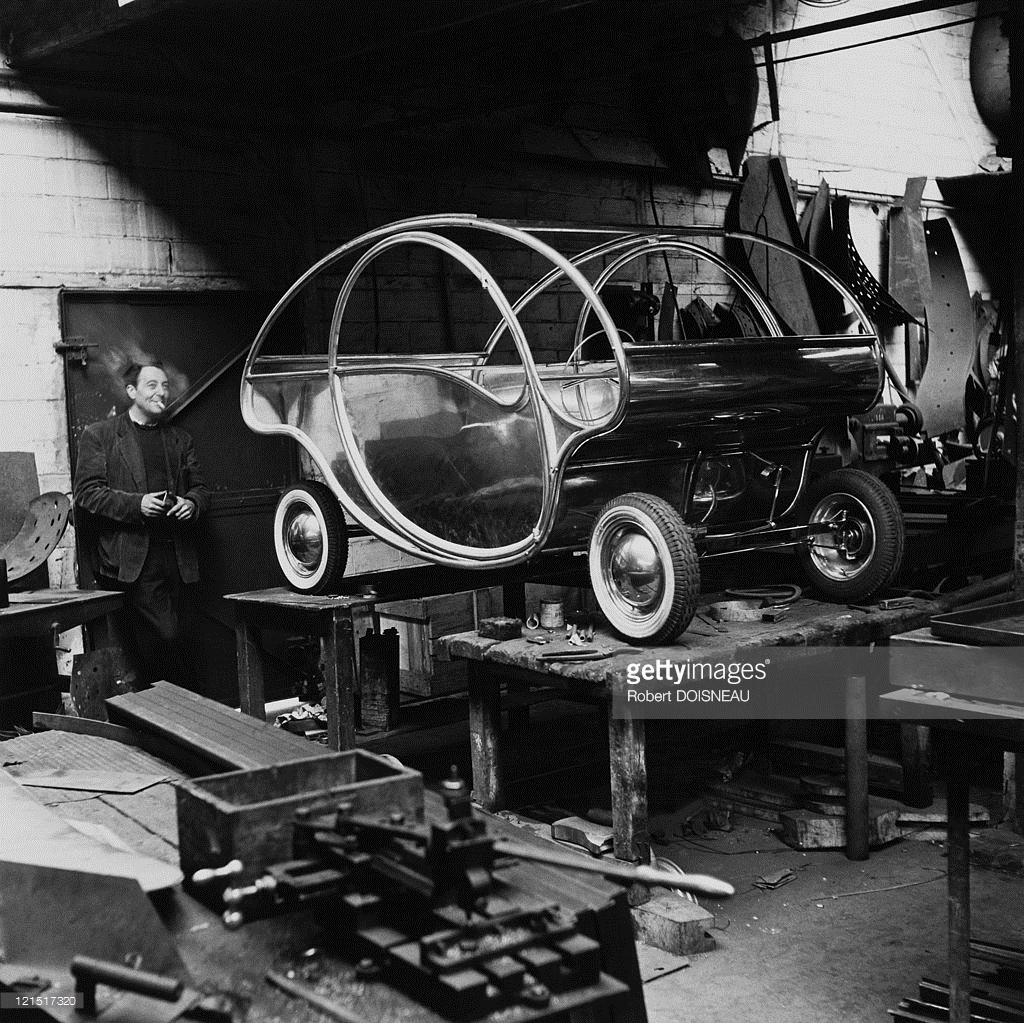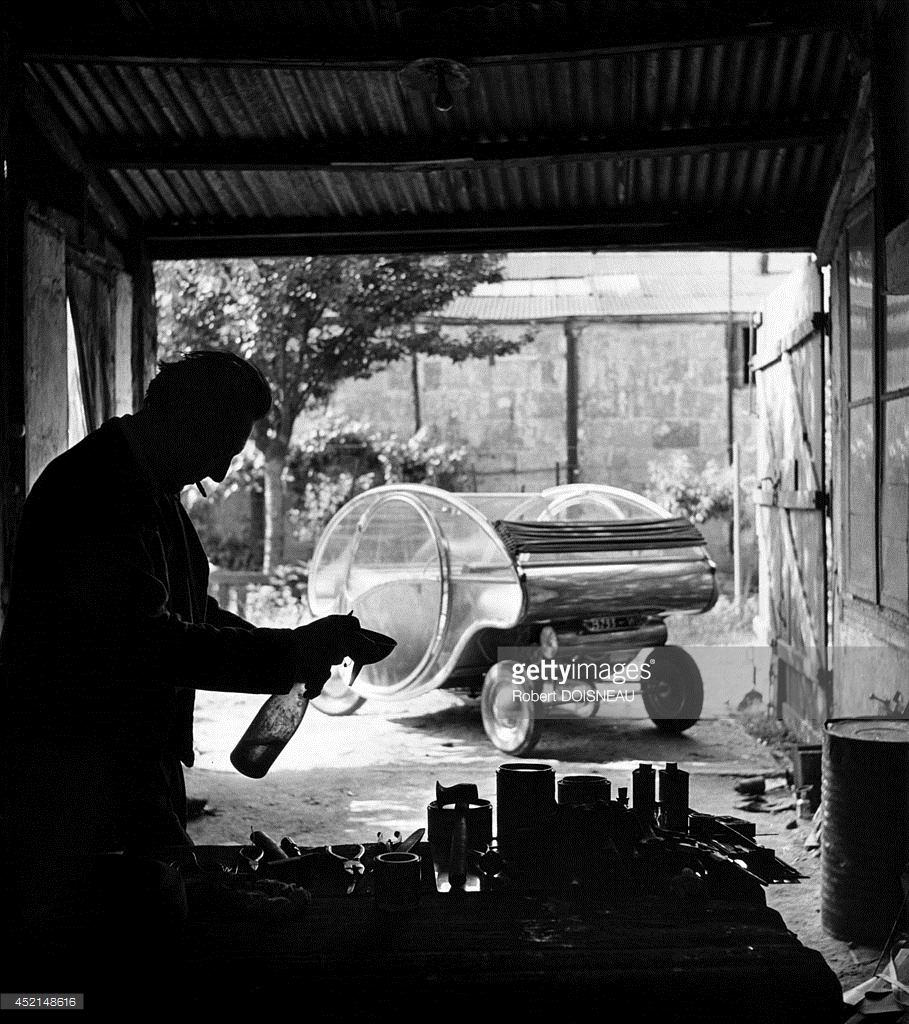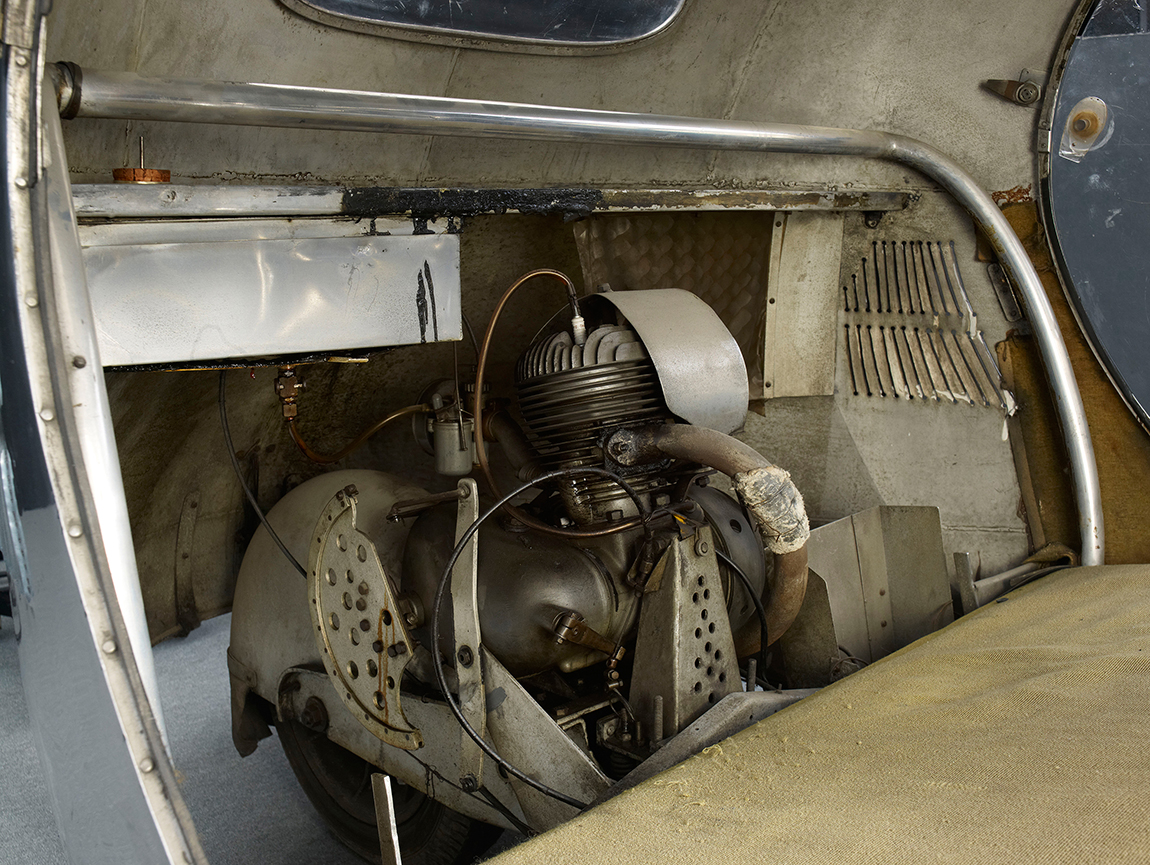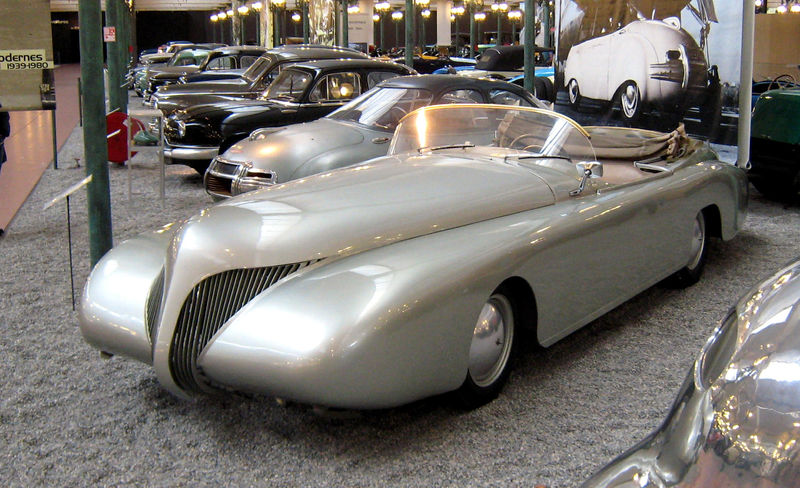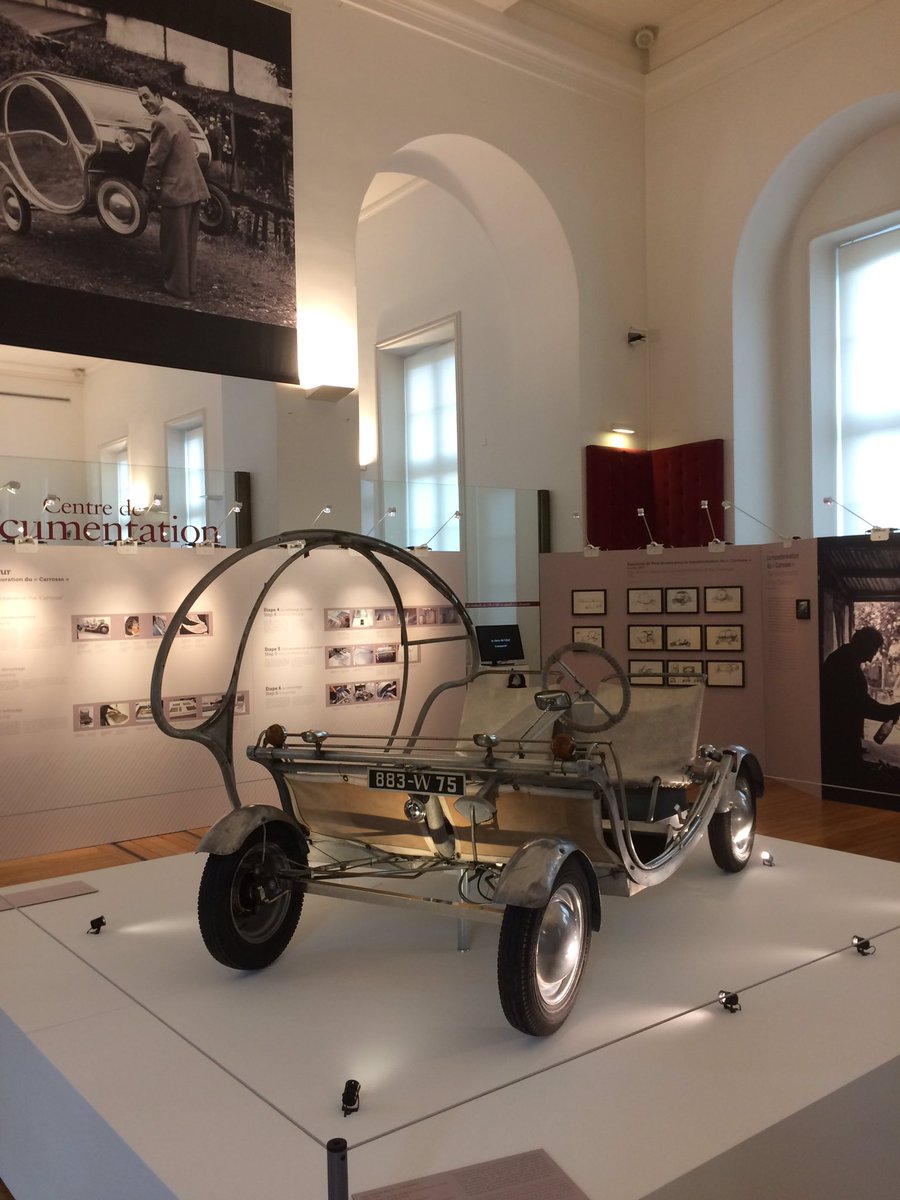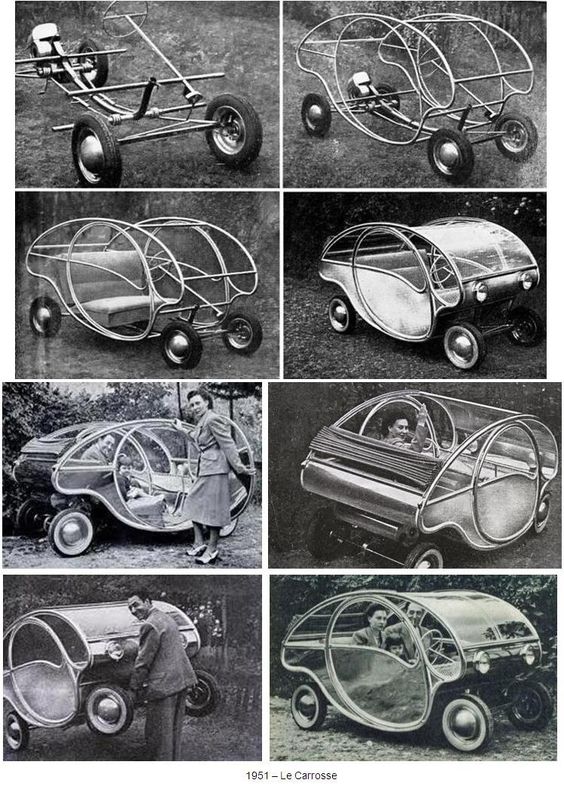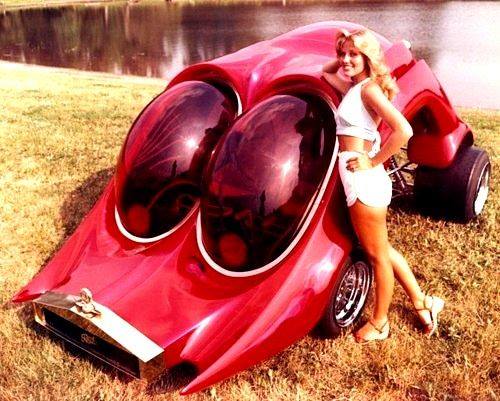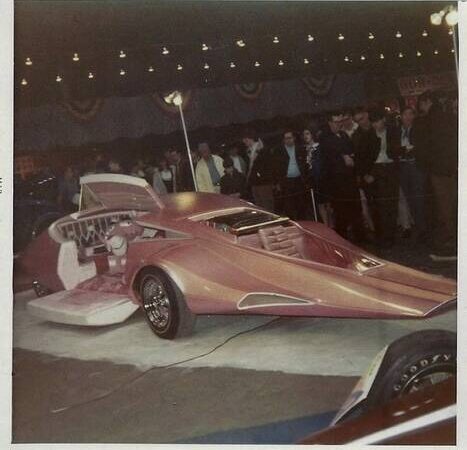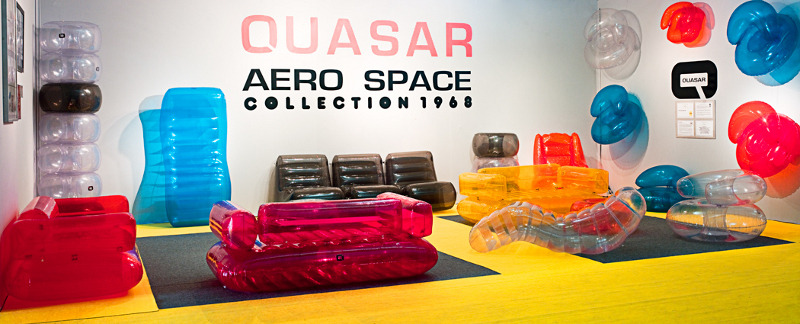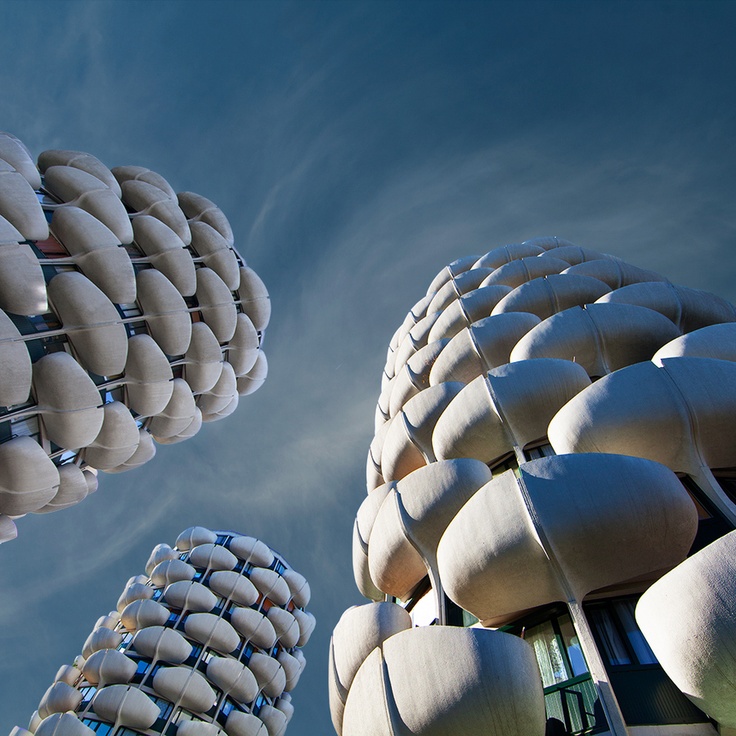Paul Arzens, France

An original Paul Arzens caricature of unknown date.
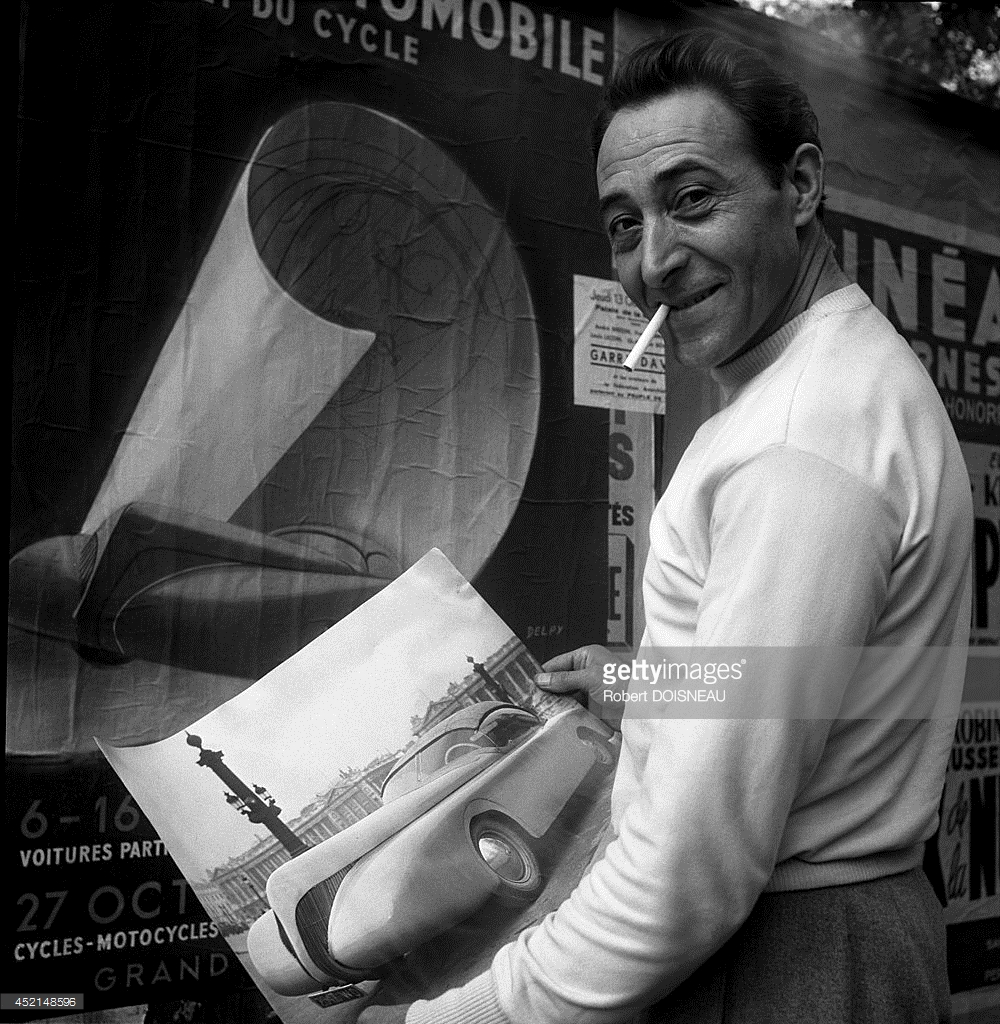
Paul Arzens (1903-1990)
Paul Arzens is a French designer recognized for his railway achievements as well as his extraordinary automobiles built from 1938. Paul could be called genius handyman Arzens, he was also an artist ! Our man became interested in the aesthetics of the machines after leaving the top National School of Fine Arts in Paris. from 1938, he performs work on the copper before getting in the car, he produced during this year "The Whale", a convertible with sculpted designs made on a Buick chassis. Later, after the Second World War, Paul Arzens was the interlocutor of the SNCF for which it will develop the design of locomotives BB and CC, but also forms of panoramic railcars. And we could give other qualities in Arzens, painter, decorator… Motorization side, so this is an electric motor that makes it possible to move this car. Thereof is fed with 300kg of batteries which are in the rear portion and located under the chairs. These offer a 100km autonomy (a feat at that time) and the engine allows a top speed of 70km / h.
Arzens, in good creator, will design his own car to get around in the capital : it was the "egg Electric". The shape of this car calls, lots of curves, a body made of aluminum, but material that is discreet as the area left to the glazing is important, which is made of Plexiglas. A single vehicle and atypical, surprising in its time (and even today) with these modern concepts.

Around the restrictions of the occupier during the Second World War has been the concern of many people, but when it comes to the automobile thing and that one is artist, can be made a vehicle out of the ordinary. Such is the case of Paul Arzens who built his own electric car 1942 : Egg Electric. In 1942, he designed and built the “electric egg” designed for your everyday use. This two-seater and three-wheelers was electric. It was made of aluminum and covered with a sphere of Plexiglas. Engine, a single cylinder 125 cc and 5,5 ch. Allow the car to reach speeds of 80 km / h. The design of this car clearly illustrates the will of Arzens with the approach constitutes an egg.
But for this section, we limit ourselves to the Second World War; France, including Paris lives under the yoke of occupation which imposes rationing. The car is hit with gasoline becomes a rare commodity, showing horses and cattle as a means of locomotion, but also that remade electric car surface after having been forgotten.

But after the Second World War, Arzens finally traded his electric motor against a small 125 cm3 of Peugeot origin. The Electric egg remained the property of Paul Arzens until his death in 1990, he used from time to time. At his death, all his works, Electric egg including, joined the museum collections of Art and Craft in 1993 putting him in the Automobile City of Mulhouse. Around the restrictions of the occupier during the Second World War has been the concern of many people, but when it comes to the automobile thing and that one is artist, can be made a vehicle out of the ordinary. Such is the case of Paul Arzens who built his own electric car 1942 Egg Electric.

The Electric Egg is not just a simple car, it is the fruit of a work of reflection on the use of cars in urban areas. Certainly, Electric traction is chosen by need to bypass fuel restrictions imposed by the occupier, Arzens but will not cease to sell the electric car as the future of the city : no pollution, ease of use, silent, small size ... The body, we talked about, uses two modern materials for its time and that both have the advantage of being light. The car is designed as a space in which two passengers must be seated, thus the shape of the egg was retained, as for releasing a vast cockpit while taking a smaller. The chassis meanwhile is made Duralinox, it is a simple elastic tube connected to the fork of the rear wheel, which helps maintain proper attitude and a good handling.
electric BB 9004 SNCF La locomotive prototype BB 9004 is preserved here in Mulhouse : City train.
Paul Arzens, (1903-1990) is a French designer known for his railway achievements and its automotive extraordinary constructed from 1938.
Artist and engineering handyman, he lived the early consideration of the aesthetic factor applied to machines. The early 1950 the first high-speed train projects, in the late 1960, Paul Arzens was the privileged interlocutor of the National Society of French railways (SNCF) in design and decoration. Joining playful and professional aspects, he was using his studio circuit, rue de Vaugirard in Paris, to test, and confirm his aesthetic ideas on material moving. More, where is the engine ? La 3233-WO, Car Project Paul Arzens, 1951 An article in The Journal of Aluminium (July August 1951, n° 179) recounts the amazement of passersby in front of a craft of funny shapes "a tad Louis XV". This is the all-new small car popular economic designed by artist designer engineer Paul Arzens.
from 1937, he had handmade copper models the revolutionary forms. Since that time, he had the idea of designing cabs driving with a slightly rounded face and a developed glazing on the sides. These proposals will be taken, from 1957, on locomotives of the family BB 9200, BB 16000 and BB 25200.
A rich imagination allows him, parallel to its work for the SNCF, draw futuristic aircraft and make itself more cars, the most famous are The Whale, performed 1938 on a frame of Buick and Electric Egg, built in 1942. Made of aluminum and topped with a sphere in plexiglas, this car demonstrates strikingly the willingness to approach the ideal shape of the egg. It was equipped with an electric motor with batteries totaling five 300 kg for a range of 100 kilometers and a top speed of 70 km / h1. Paul Arzens used these cars to the end of his life and was the only one to lead them.
In addition to the locomotives years 1950, Paul Arzens designed forms panoramic railcars operated from 1959 and equipped with central Vistadome offering travelers a panoramic view of the landscape. Adapting the shape of the inclined windscreen locomotive built by Alsthom for Finnish railways, it has developed, on locomotives of the series CC 40100, a new form of front and back which was inspired, he said, the position of the "sprinter in the starting block". This particular form is originally a family nicknamed the locomotive cassés.On nose it is also an impressive number of decorations for various series of locomotives and cars. He was conducting tests on models of trade HO scale he was testing on moving his studio network decorated with a painted decoration of his hand. He had, as such, able to verify how the future livery Capitol was part of the landscape.
It was Paul who Arzens, the first, began to boost the image of the railway by giving the color materials that contrast with the famous "green car".
Arzens was an excellent painter (classical tradition), he had a large amount of pictures he refused to sell, except on the rare friends, because he said, each reminded him of something. For pleasure, he even made some more sculptures.En SNCF, he worked for the RATP, and has been the designer of several metro stations.

Parallel to this work, Arzens leverages a prolific creativity to design futuristic aircraft and build motor vehicles. In 1938, he appropriates the chassis of a Buick American Standard and clothes of an imposing and impressive body aviation-inspired, thus giving birth to the "Whale" .
In 1941, he made an electric car with an aerodynamic aluminum body 5 meter, on the chassis of a Fiat 1924. It was equipped with an electric motor 10 ch, who worked with 24 batteries 12V 250A. she weighed 1100 kg., And had a range of 300 km. After the war, the car has changed in appearance and converted to gasoline.

PARIS, FRANCE – 1944: French industrial designer Paul Arzens and his car “The whale” in 1944 in Paris, France – Paul Arzens (1903-1990) is a French designer known for his railway projects, and its extraordinary cars built from 1938 . (Photo by Robert DOISNEAU / Gamma-Rapho via Getty Images)
By comparing (below) an Electric Version (Original version) the 2 Cars have quite similar lines but of course this electric model does not need the air vents anymore.
By comparison an Electric version (Original version) the two cars have fairly similar lines but of course this electric model no longer needs the air vents.
Electric cars : car aluminum body Paul Arzens (driving). A coupé manufactured by the Bréguet workshops. Paris, July 1942.


FAURE is the work of Pierre Faure, a former worker at Breguet, who began to produce electric cars to diversify and enable its plants in Toulouse run. FAURE is a car of very simple design, his body based on a beam frame which supports the engine, but also the six batteries used to power, the total intensity of 100 amps, voltage 72 Volts. for all that, the FAURE is relatively light as it appears on the balance 550kg. As for performance, the FAURE could travel between 50 and 75km with charged batteries, and spinning up the crazy speed of 45km / h. Reloading meanwhile could be made from any household outlet 110 Volts, He then took 12 hours. Optional, Pierre Faure company marketing a transformer that can charge the car with 220 Volts in less time. Certainly, Faure was the binding car, but much less than the fuel coupons getting distributed dropper, without forgetting that Faure remains despite any economic : 6 Franks allowed full recharge of the batteries in Paris during the war. Depending on the time of advertising, Faure cost for use over 10 times cheaper than a gasoline car.. As to the body, Faure had the distinction of having his lights under the front hood, Small windows allow light to pass forward. The body was made of wood, for lack of better then, and cars were available in "two-seater sedan", "Sedan three places" and van.
During WWII, France lives in the time of rationing, the remaining resources are taken by the occupants to carry out their eastern front. The essence is part of the few commodities, so much so that the automobile stock is reduced to a trickle. To work around this inability to roll, the gasifier is developed, but electric cars. I suggest you to read with one of them, the FAURE.

electrical CC 6572 SNCF
CC 6500, towering machines aesthetics by the talented Paul Arzens, were of the livery “Sunburn” that married perfectly with cars Grand Confort Capitol. DC 6572 is preserved at Mulhouse in its original livery.
Today, find Faure is a miracle, at least two copies are still known today..
electric BB 20210 SNCF – Electric Locomotive BB polytension 20210 SNCF original livery in the museum of the Cité du Train in Mulhouse.

DC 7100 the world speed record badly born !
Trained at the National School of Fine Arts in Paris, Paul Arzens (1903-1990) is known to have drawn many rail vehicles for the SNCF and Alstom. Among his rounded sides electric motor of the family "Jacquemin" (BB 9200, BB 16000 and BB 25200) years 1960, or profile "broken nose" Locomotive years 1970 (CC 6500, CC 21000, BB 15000).
A style designed Arzens “broken nose” locomotive for the French railways (SNCF), from a family of locomotives built from the late 1960 in the years 1970. Arzens was responsible for the design of the French railway locomotives years 1940 until the years 1970. La locomotive de série CC7100 Arzens style. With the power delivered to all wheels, realized several speed records: son record 1955 an electric locomotive was unbroken for over 25 years.



Paul Arzens second prototype is built on a Fiat chassis lot lighter. There is an electric vehicle claiming a range of 200 km 65-70 km / h.
Rétromobile 2010 – 23 January 2010 Like every year, I went round the side of Rétromobile. The “Whale” directed by Paul Arzens With the Whale, Arzens reconciled his two passions : The Art and the Automobile. He carried his equipment in the broad chest and used the cabin as a workshop. Whale uses a Buick chassis and has an engine 17 CV 3500 CCM, it can reach the speed of 160 Km/h.

With 500 vehicles 464 automobiles 98 brands, including the famous collection of Fritz Schlumpf, that trace the history of the European automobile 1878 nowadays. the collection, located in an old spinning 1880 from 20 000 m2, includes more than four hundred parts classified as historical monuments and the most important set of previous automobiles 1910 with Louwman The museum also Haye.C'est largest Bugatti collection in the world with two of the six famous Bugatti Royale Coupe Napoleon whose well as a large collection of Rolls Royce.
The Cité de l'automobile – National Museum – Schlumpf Collection in Mulhouse is one of the most major automobile museums in the world.



PARIS, FRANCE 1944
French industrial designer Paul Arzens and his car “The whale” in 1944 in Paris, France – Paul Arzens (1903-1990) is a French designer known for his railway projects, and its extraordinary cars built from 1938 (Photo by Robert DOISNEAU).
The electric egg Paul Arzens, Inv. 40937
Museum of Arts and Crafts / C. Company




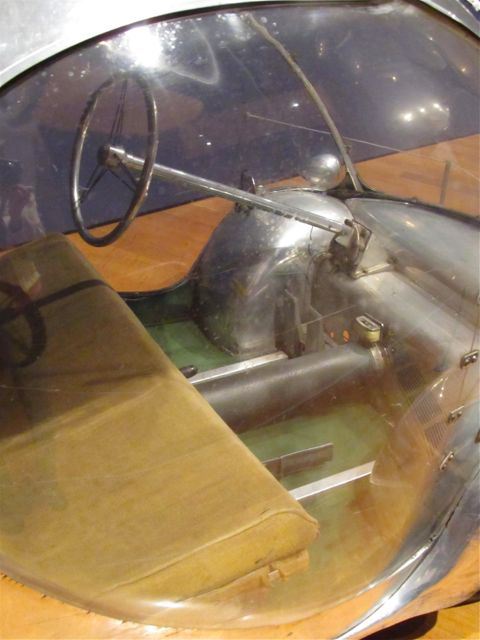
The Electric Egg Paul Arzens (1942)



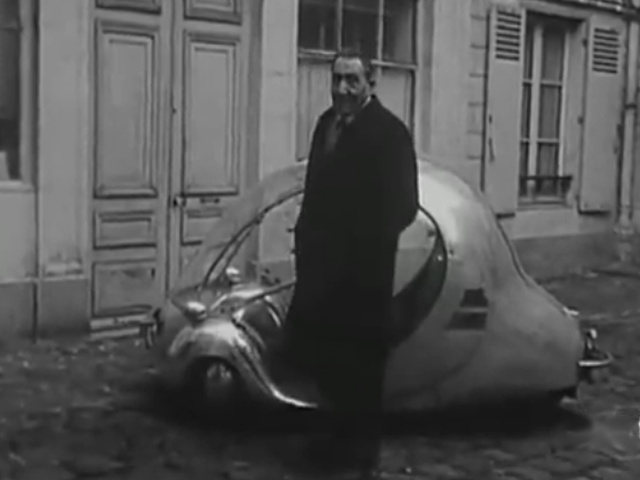
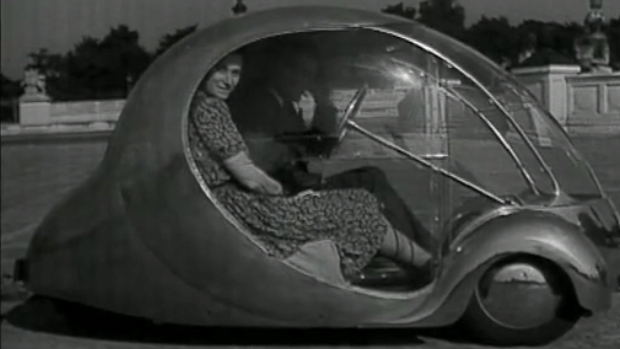

Paul Arzens with his electric car, invented and built by itself.

Paul Arzens was a French artist and industrial designer, born in Paris in 1903 and death 1990. He designed several car models, but excelled in his work for the SNCF, where he designed the locomotives, wagons and wagons over the years 1940, 50 and 60. most locomotives are still in service. He also did work for the RATP, where he contributed to the design of the Paris metro stations.
The electric egg Paul Arzens 1942

All round and shine, electric egg is a car more atypical, single vehicle that still surprises today by the modernity of its design and its lines.

This vehicle was built in 1951 by Paul Arzens, handyman and genius inventor who revolutionized the codes of art and industrial aesthetics. This vehicle was built in 1951 by Paul Arzens, handyman and genius inventor who revolutionized the codes of art and industrial aesthetics.
Electric vehicles with an anterior future If the electric vehicle has returned to center stage, it is in fact as old as automotive energy. A small thumbnail on the subject including the Egg Paul Arzens, Berliner Ford prototype electric scooter Flankel.

Little anecdote above :
And on my side j’ went to the mixer with the Alpine -Renault A442 . Short, the trick is completely shifted , we recognize well’ A442, his fin, the air intakes, but as well as the central embryo of the Coach, very recognizable.

The 1951 Arzens Carrosserie is a concept car originally from engineer Paul Arzens, which looked like a kind of mini motorized cart.




Model of French designer Paul Arzens in 1951.
After the war, the batteries are replaced by an engine of Peugeot petrol 125 cc. Arzens property remained until his death in 1990, electric egg joined the collections of the Musée des Arts et Métiers in 1993 under exceptional dation including the main designer of automobiles and railway models. Automobiles are filed from the Mulhouse Motor City (Haut-Rhin). The electric egg returned temporarily to be processed by the restoration workshops of the Musée des Arts et Métiers : carefully dusted, he was placed on a pedestal for easy transport and public presentation. On this occasion, the toolbox Paul Arzens, including various keys and a bicycle pump, was found under the seat.
In back, Arzens up five batteries totaling a weight 300 kg, offering a range of 100 kilometers and allowing speed 70 kilometers / hour.
The chassis is constituted by a tube Duralinox connected to the fork "elastic" of the rear wheel : that provision helps keep proper plate while placing the very low center of gravity, hence driving comfort enjoyable.
Four years later, bypassing the fuel restrictions imposed by the Occupation, Arzens designed a revolutionary vehicle : Electric egg. Mobilizing light and modern materials, aluminum and plexiglass, Arzens imagine a case having only one space that can fit the driver and a passenger.


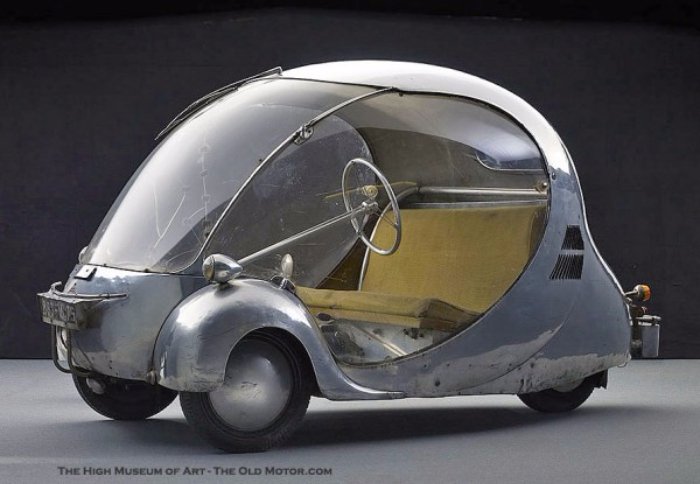
A museum is preparing to launch an exhibition of some of the sleekest and most futuristic cars ever designed. The exhibition will feature Dream Cars 17 concept cars years 1930 in the 21st century and includes not only a Porsche and a Ferrari, but a strange bubble car, Lancia a wedge and a Batcar style Cadillac Cyclone. The exhibition shows what Europeans and Americans thought the cars of the future might look like. The exhibition takes place at the High Museum of Art in Atlanta, Georgia, United States, and also featured in the form of rocket General Motors Firebird I, the eye-catching Ferrari Pininfarina and mouth-watering BMW Gina. Concept cars like these are rarely on the market and is purely to enhance the realm of possibility. The exhibition opens 22 May and lasts until 7 Sept. director Michael Shapiro said museum: "Our previous exhibition was extremely successful in bringing new audiences to the museum.
Paul Arzens' electric egg car – 3Dsmax/Vray-G Dingeon 02/2012




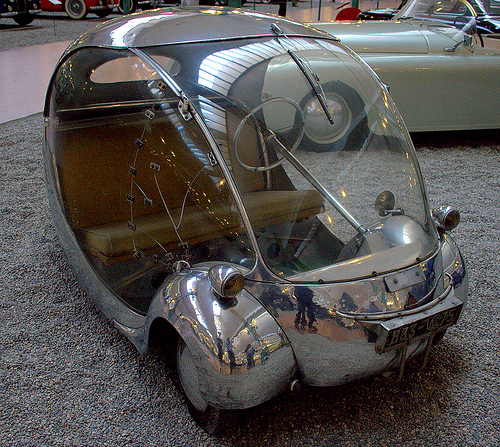

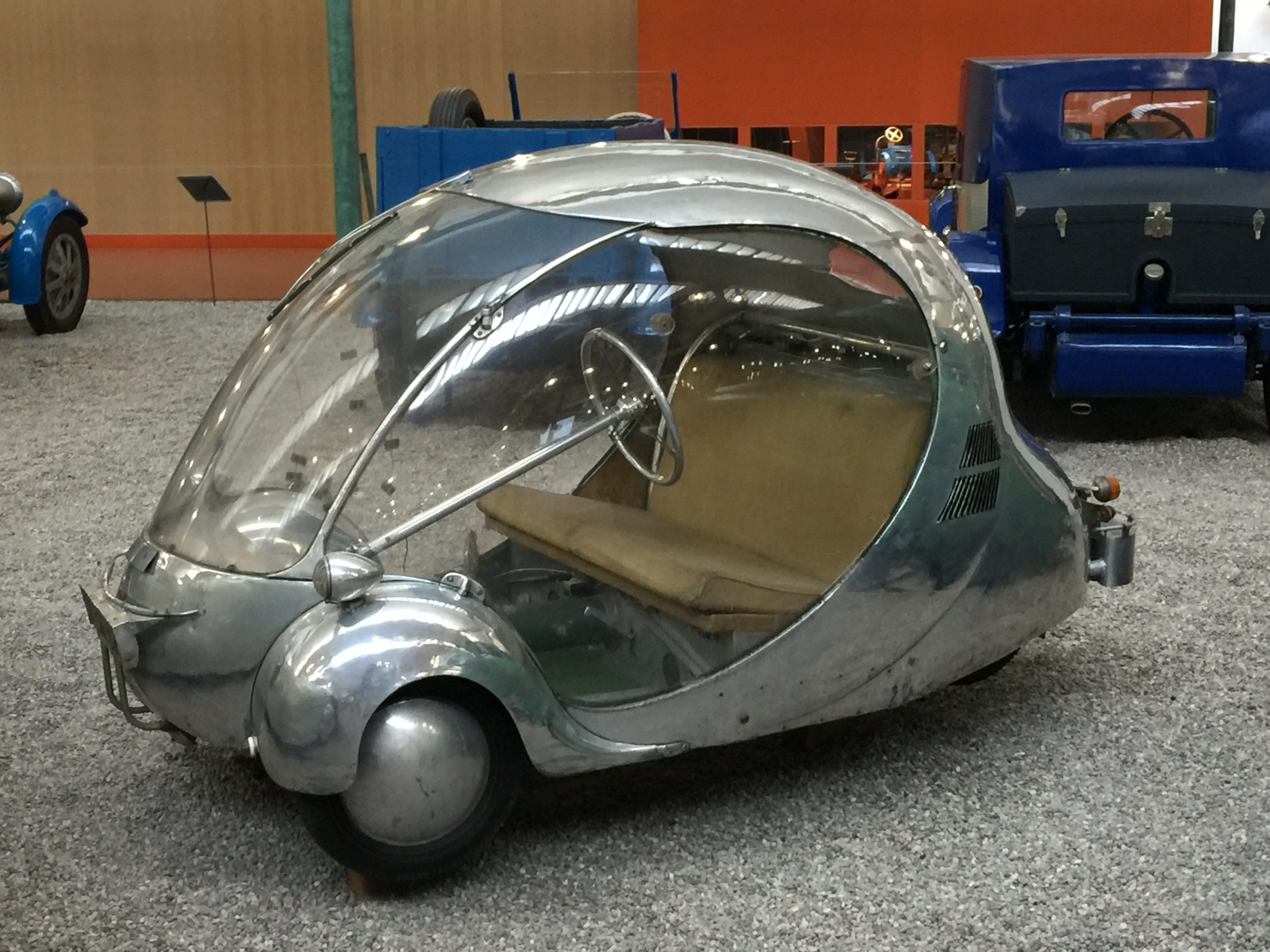

Ongoing restoration of “Coach” by Paul Arzens for the Heritage of Arts and Crafts.

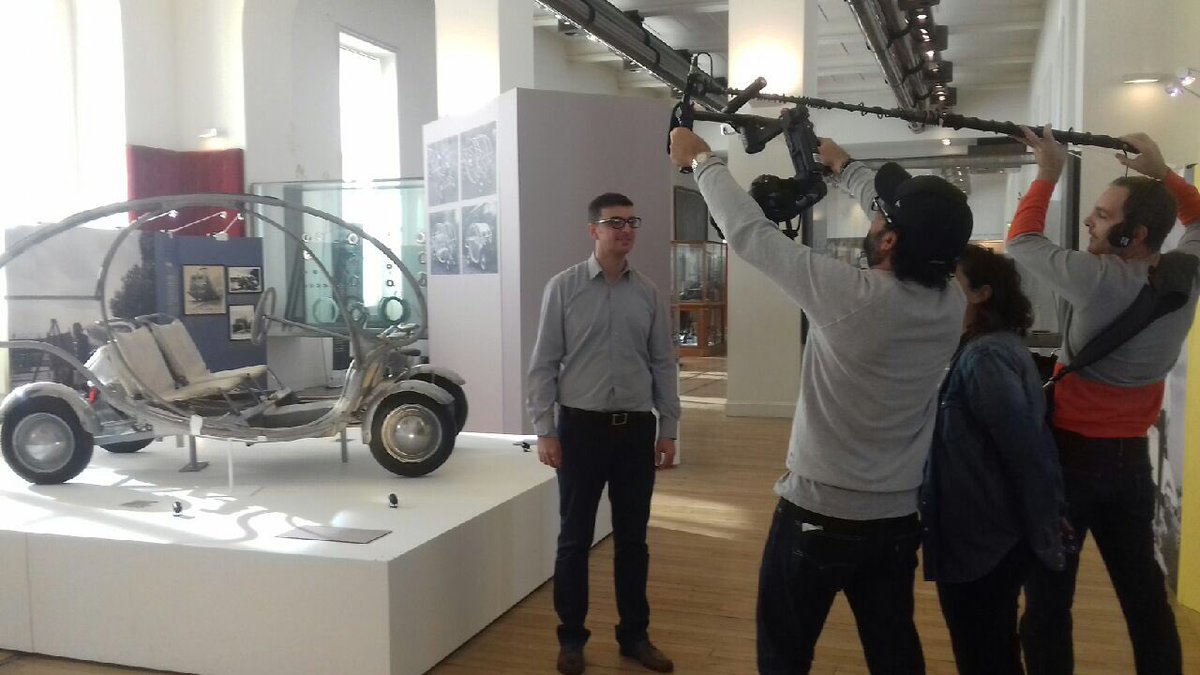



tricycle cart ” Baby Rhône “

In 1944, another member (just dandy) the family also owned an electric vehicle. Seen in the photo with my father (and his round glasses), my uncle Bernard(the smallest), the 2 brothers and sister, Monique, before the house of my grandparents in Pont-de-Claix (38). Brigitte ARZENS, Paul's daughter, with whom I have the joy of having reconnected, tells me it was a tricycle cart ” Baby Rhône “.







